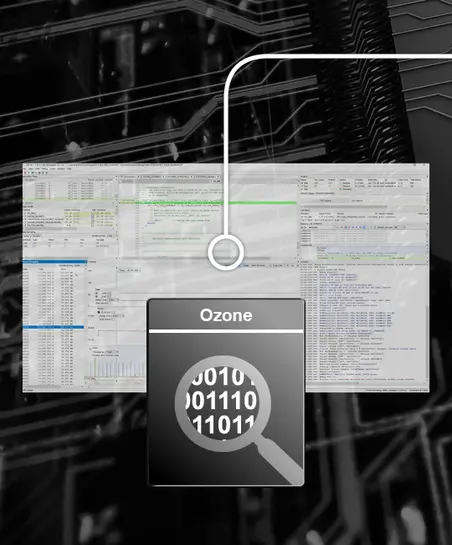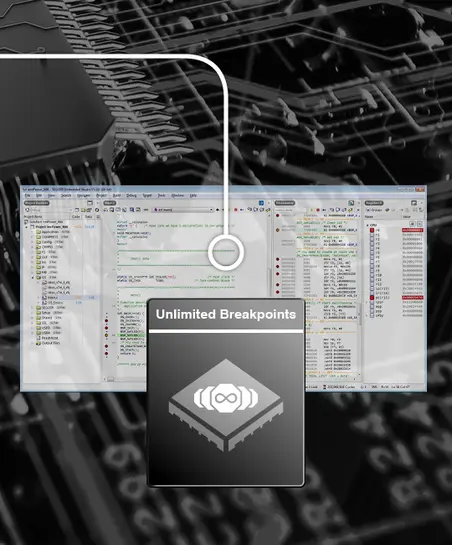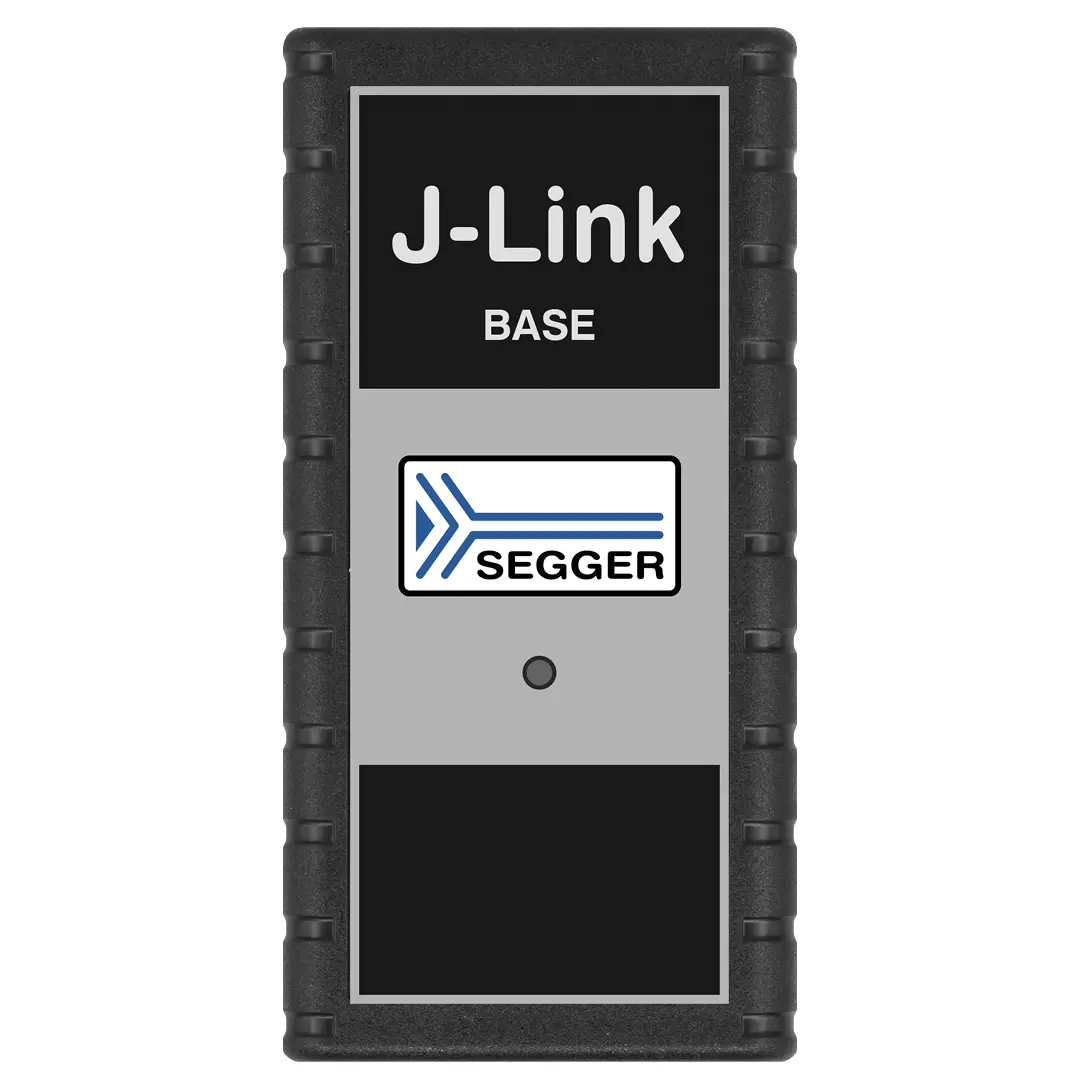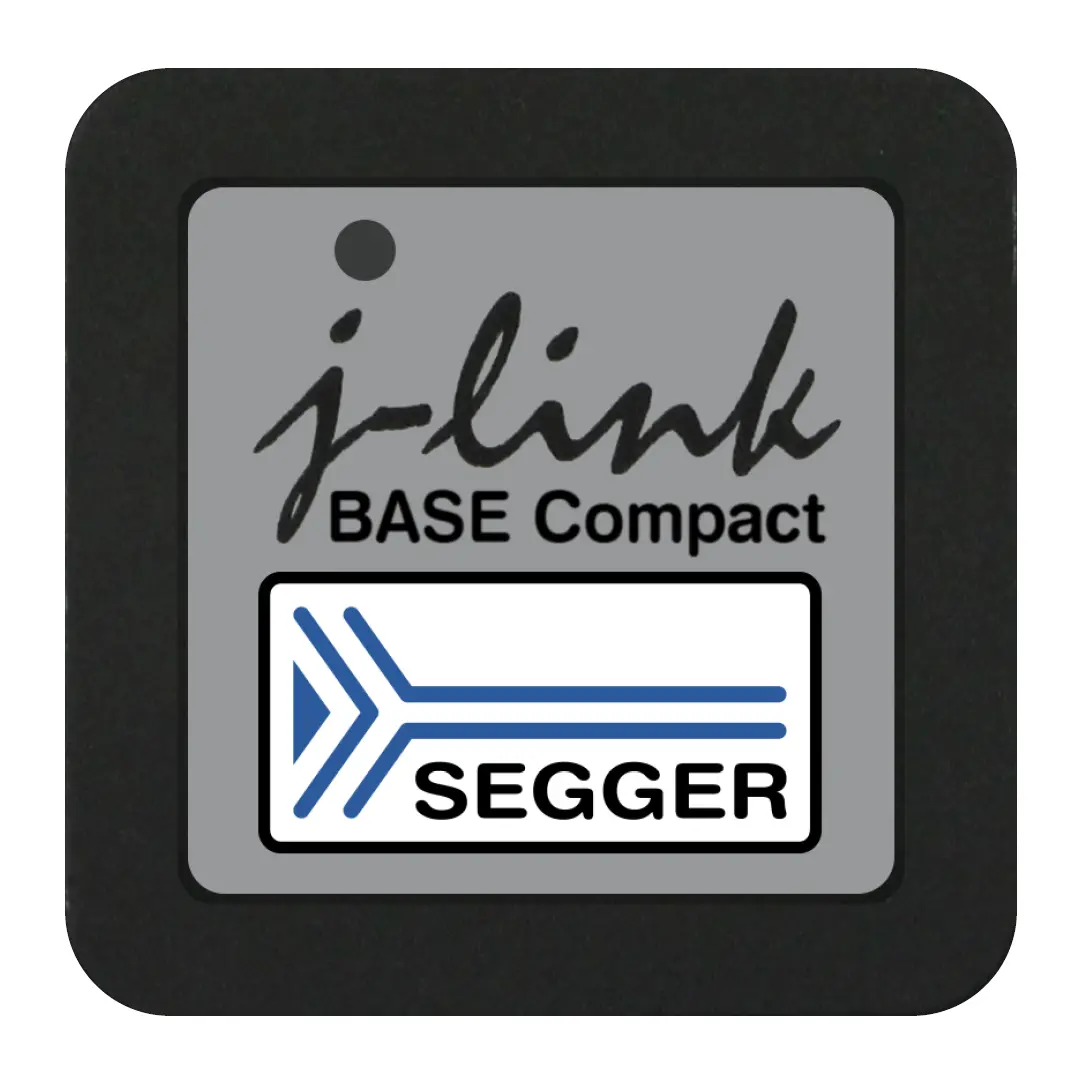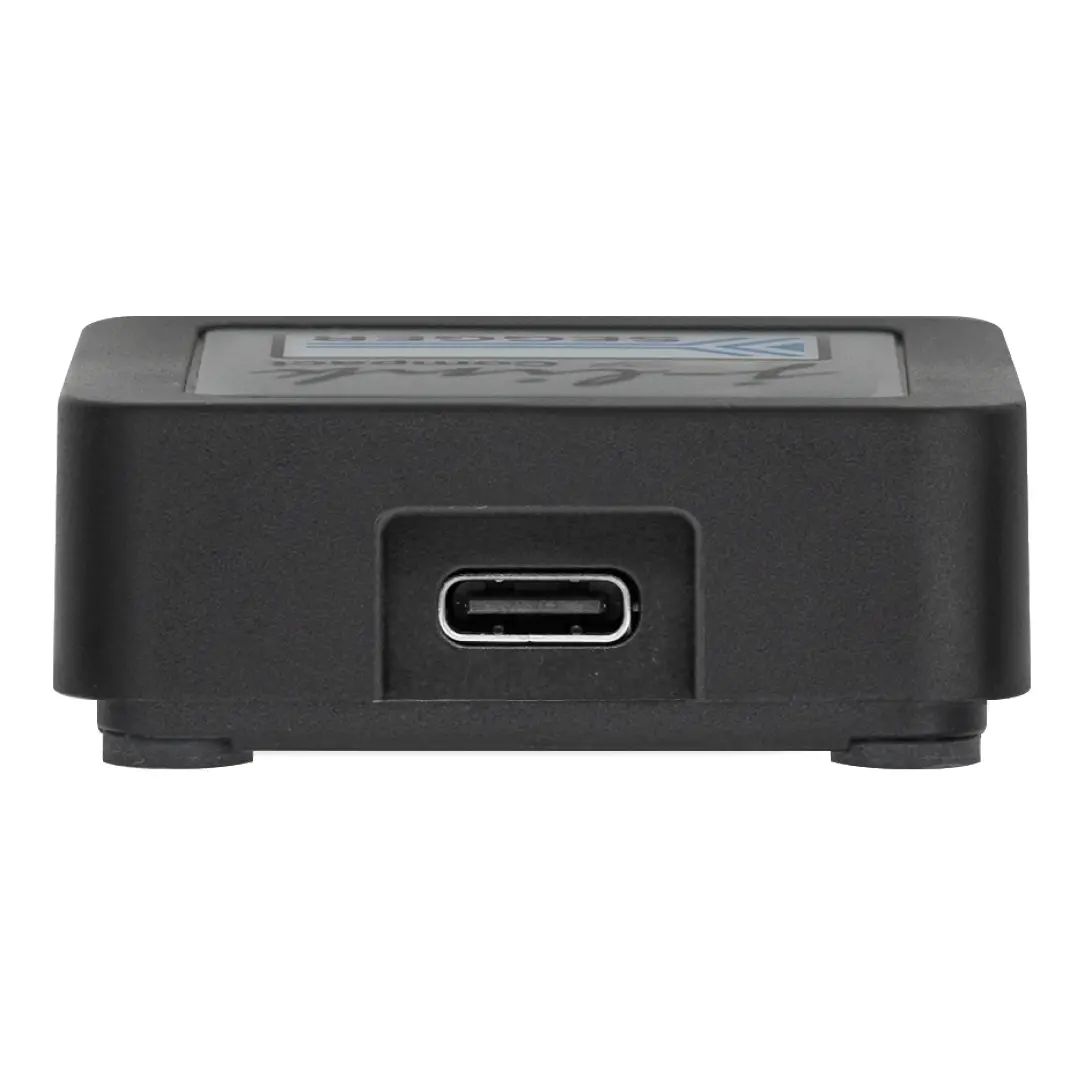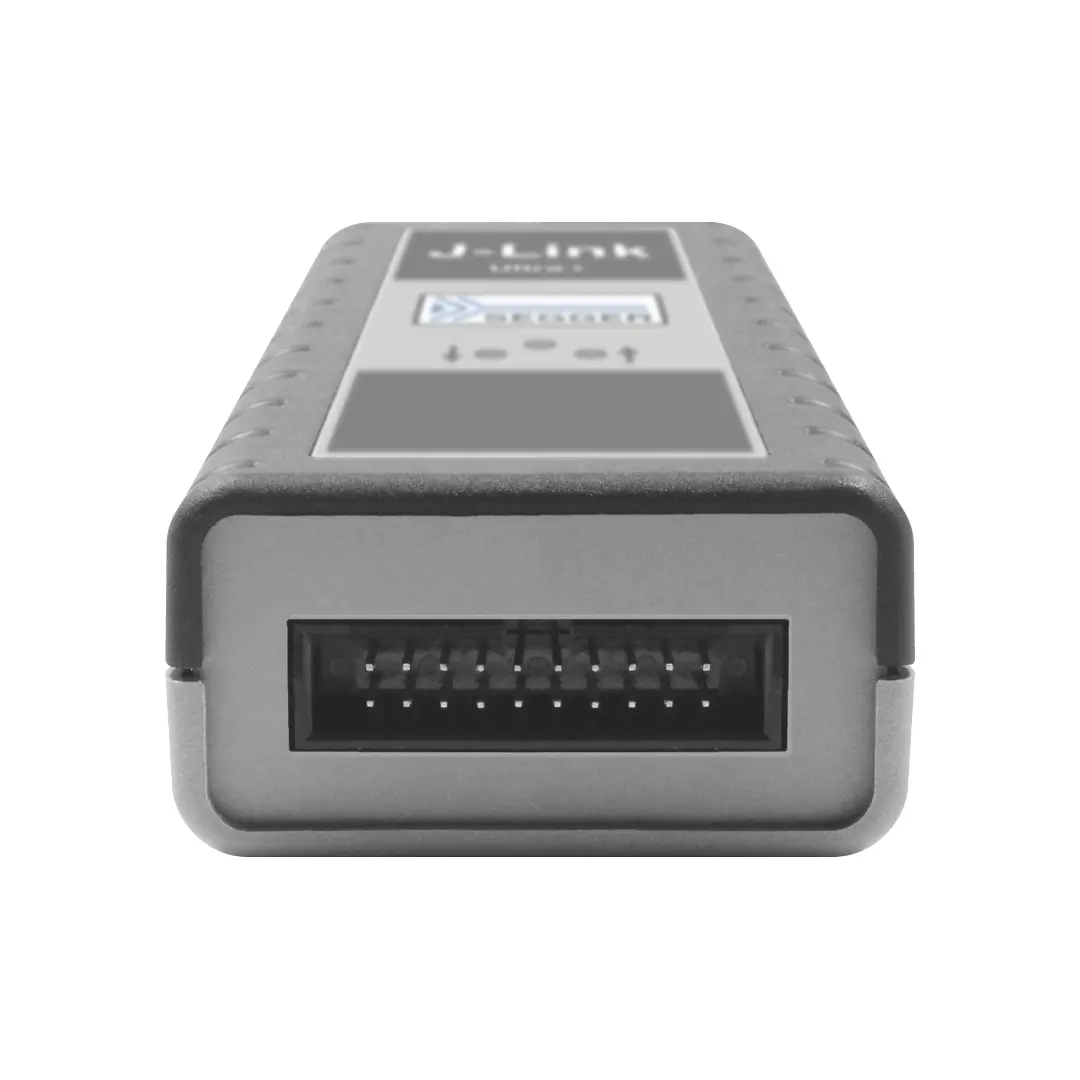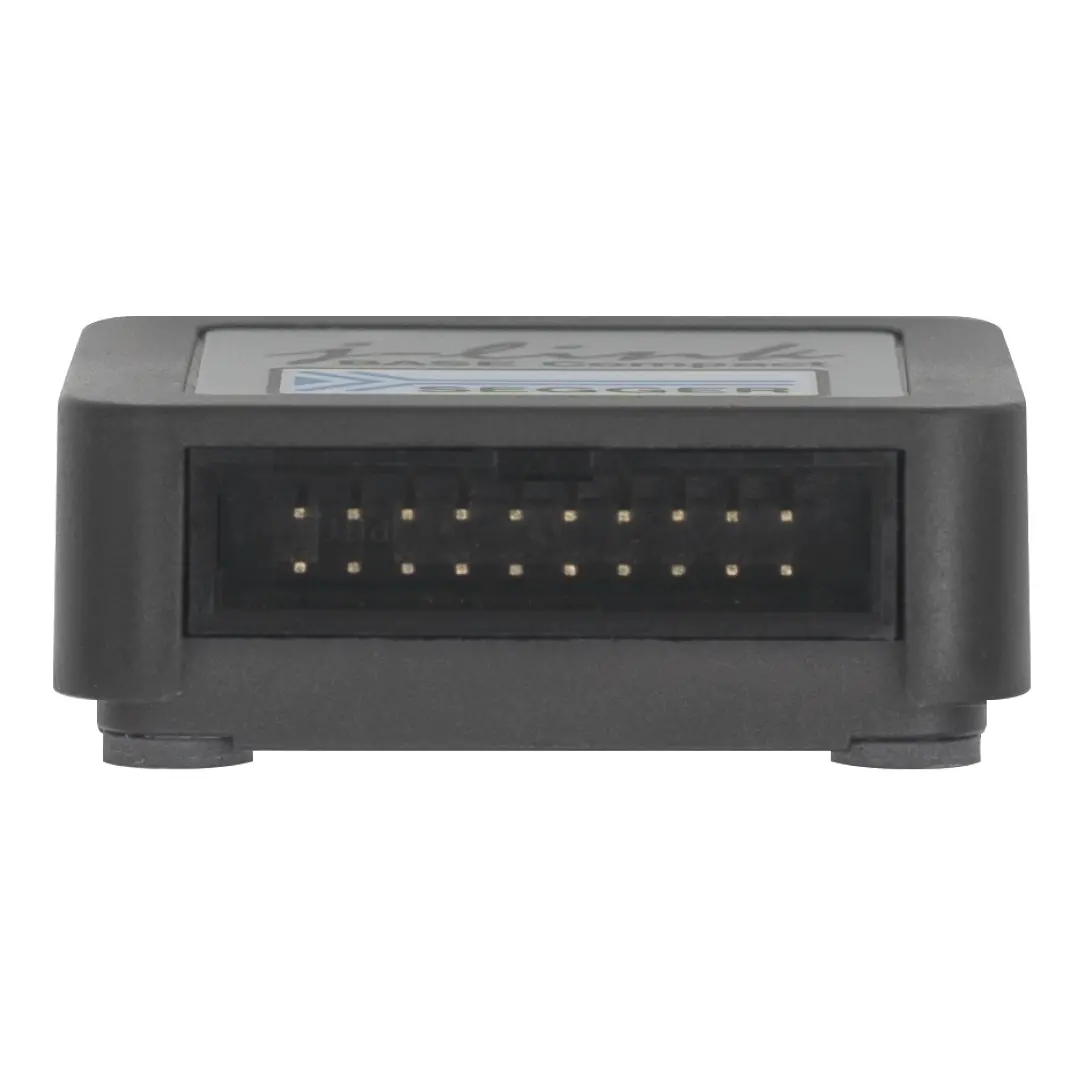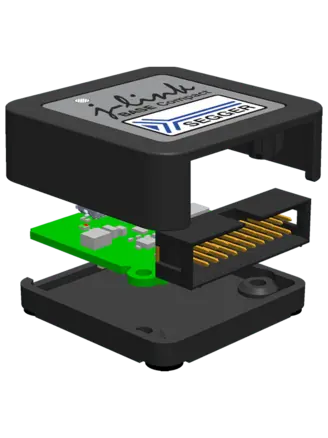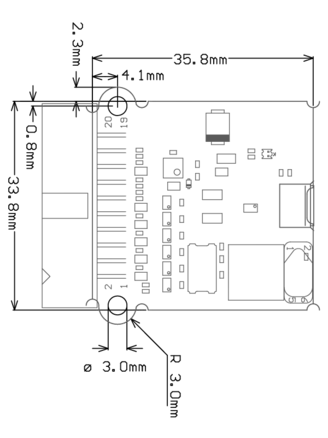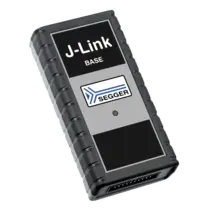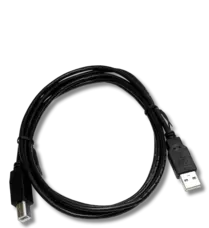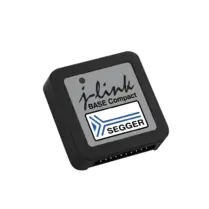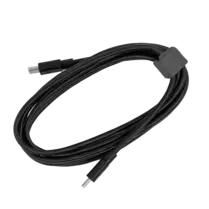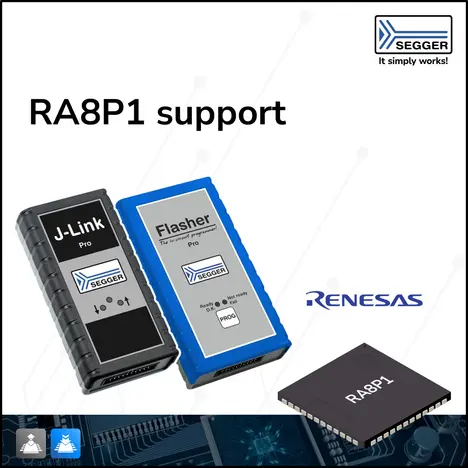J-Link BASE
The entry-level debug probe
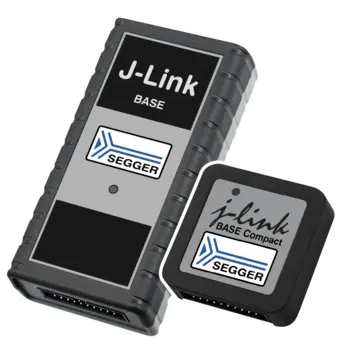
Overview
The J-Link Base is the perfect level for the average developer to jump into the wide world of J-Link. It offers a respectable download speed of 1 MB/s.
All J-Links feature high-speed programming (from 1 MB/s up to 4 MB/s), built-in VCOM functionality, and support for a broad range of microcontrollers. Plus all future software and firmware updates, as well as any new flash loaders for target devices that will be added, are free of charge. And all J-Link debug probes are supported by all major IDEs including Eclipse, GDB-based IDEs and SEGGER Embedded Studio.
For speeds of up to 4 MB/s, and for features such as unlimited breakpoints in flash memory, use with Ozone, RDI/RDDI and J-Flash, web interface for easy configuration (built-in webserver), there are many other options in the J-Link family of debug and trace probes.
J-Link BASE is available in two form factors with identical functionality: J-Link BASE Classic and J-Link BASE Compact.
Key features
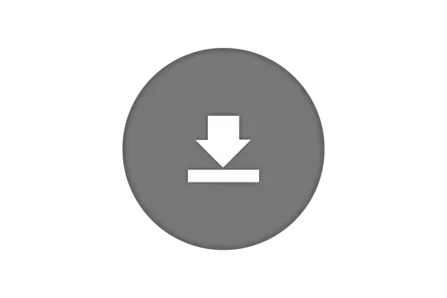
High download speeds
J-Link BASE offers download speeds of up to 1 MB/s, ensuring that project development moves forward smoothly and reliably, with minimized download times.
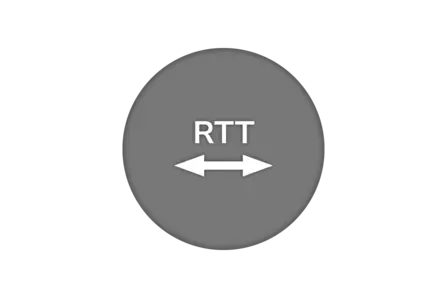
Real Time Transfer
J-Link BASE offers Real Time Transfer (RTT), which provides a simplified path for information to travel when an application is running. Users can also easily monitor changes in operation.
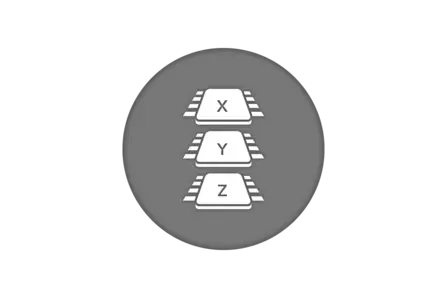
Broad CPU and IDE support
J-Link BASE works with an extensive range of microcontrollers and IDEs. It enables users to connect their selected microcontroller with their favorite IDE.
Use cases
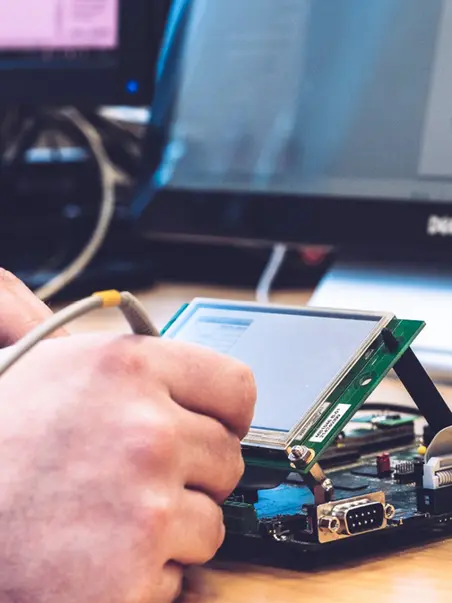
Entry-level debug hero
J-Link BASE is a modern debug probe that is both smart and a swift communicator, which means communications are carried out not only reliably, but also faster than with a simpler probe. SEGGER's RTT debug communication interface is also available, and all popular IDEs offer support for J-Link.
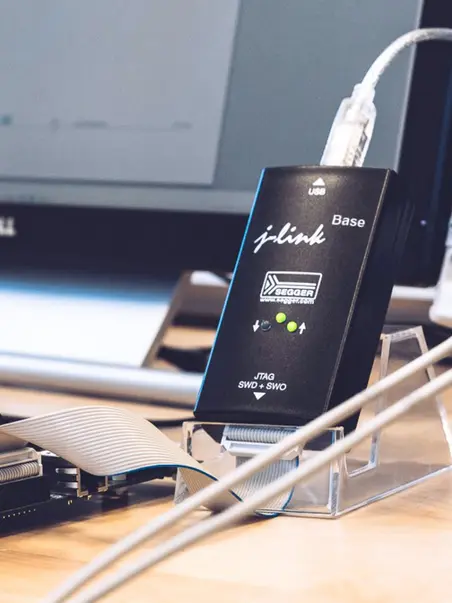
Basic debug support
Should a toolchain not support the comprehensive feature set, including unlimited breakpoints in flash memory and monitor-mode debugging, found in the more-advanced J-Link products, J-Link BASE is a sensible, cost-efficient alternative for use with OpenOCD or similar tools.
Upgrade path
J-Link BASE offers basic functionality. To use the full range of features found in a J-Link PLUS, for example, the J-Link BASE to PLUS upgrade is required.
This upgraded license includes a software bundle with a J-Flash/J-Flash SPI software license to program EEPROM and flash chips in microcontroller systems, and a J-Link Unlimited Flash Breakpoints license. Also included is the Ozone J-Link debugger and performance analyzer, monitor-mode debugging technology, and a license pack for the RDI/RDDI interface.
J-Link's BASE to PLUS upgrade is available at shop.segger.com.
Supported devices
The list of supported manufacturers, families, devices, and systems on a chip includes tens of thousands of devices in hundreds of device families.
Device not listed? Please don’t hesitate to contact us.
Software
All software is included free of charge. As a multi-platform solution, J-Link BASE comes with setup and control software for Linux, macOS, and Windows. Software and firmware updates are included. The J-Link Software and Documentation Package is available here:
Technical specifications
| General | |
|---|---|
| Supported OS | Microsoft Windows (x86/x64), Linux (x86/x64/Arm), macOS (x86/Apple Silicon) |
| Electromagnetic compatibility (EMC) | EN 55022, EN 55024 |
| Operating temperature | +5°C ... +60°C |
| Storage temperature | -20°C ... +65 °C |
| Relative humidity (non-condensing) | Max. 90% rH |
| Mechanical | |
| Size of J-Link BASE Classic (without cables) | 100mm x 53mm x 27mm |
| Weight of J-Link BASE Classic (without cables) | 70g |
| Size of J-Link BASE Compact (without cables) | 46mm x 46mm x 17mm |
| Weight of J-Link BASE Compact (without cables) | 20g |
| Available Interfaces | |
| USB interface (J-Link BASE Classic) | USB 2.0 (Hi-Speed); USB Type B |
| USB interface (J-Link BASE Compact) | USB 2.0 (Hi-Speed); USB-C |
| Target interface | JTAG/SWD 20-pin |
| JTAG/SWD Interface, Electrical | |
| Power supply | USB powered Max. 50mA + Target Supply current. |
| Target interface voltage (VIF) | 1.2V ... 5V |
| Current drawn from target voltage sense pin (VTRef) | < 25µA |
| Target supply voltage | 5V (derived from USB voltage) |
| Target supply current | Max. 300mA |
| Reset type | Open drain with 100 Ohms series resistor. Can be pulled low or tristated |
| Reset low level output voltage | VOL <= 10% of VIF |
| For the whole target voltage range (1.2V <= VIF <= 5V) | |
| LOW level input voltage (VIL) | VIL <= 40% of VIF |
| HIGH level input voltage (VIH) | VIH >= 60% of VIF |
| For 1.2V >= VIF <= 3.6V | |
| LOW level output voltage (VOL) with a load of 10 kOhm | VOL <= 10% of VIF |
| HIGH level output voltage (VOH) with a load of 10 kOhm | VOH >= 90% of VIF |
| For 3.6 <= VIF <= 5V | |
| LOW level output voltage (VOL) with a load of 10 kOhm | VOL <= 20% of VIF |
| HIGH level output voltage (VOH) with a load of 10 kOhm | VOH >= 80% of VIF |
| JTAG/SWD Interface, Timing | |
| Target interface speed | Max. 15 MHz |
| SWO sampling frequency | Max. 30 MHz |
| Data input rise time (Trdi) | Trdi <= 20ns |
| Data input fall time (Tfdi) | Tfdi <= 20ns |
| Data output rise time (Trdo) | Trdo <= 10ns |
| Data output fall time (Tfdo) | Tfdo <= 10ns |
| Clock rise time (Trc) | Trc <= 3ns |
| Clock fall time (Tfc) | Trc <= 3ns |
Assembly dimensions
The compact variant of the J-Link BASE is designed to mount securely and unobtrusively into development or end-user equipment. The housing's small size and two mounting holes enable the device to be placed into existing equipment housing or to conserve space for direct mounting to a printed circuit board.
Typical applications for J-Link BASE include test fixtures that are used to automate firmware verification during development, as well as long-term testing setups. It can also be used for integrated firmware reflashing or for service purposes in end equipment, minimizing the number of tools required by service technicians.
FAQ
Q: Can I use J-Flash with J-Link BASE?
A: No. You either need the additional license J-Link Upgrade BASE to PLUS in case you already own the product. Another option is to buy a higher-end model, such as J-Link PLUS, J-Link ULTRA+, or J-Link PRO.
The same applies to the J-Link Flash Breakpoints technology or the J-Link Debugger Ozone, for instance. Learn more here...
In order to receive a free 30 days trial license, please send an email including the J-Link serial number to: sales@segger.com.
Q: What is the advantage of J-Link versus simple probes such as FTDI-based systems?
A: J-Link has numerous advantages: Communication is handled by the probe which makes communication more reliable and faster. Flash loaders are provided by SEGGER or can be created using the device support kit. The debug communication interface RTT is available. All popular IDEs include support for the J-Link across all vendors. With an additional license an unlimited number of breakpoints in flash memory can be set. In contrast to most simple probes, J-Link supports adaptive clocking as well as SWD and SWO.
Q: May I work with more than one J-Link at the same time, on the same machine?
A: Yes, you can connect an unlimited number of J-Links to your PC. No special configuration required; each J-Link is registered with its unique serial number on the PC. This enables you to have multiple J-Links connected at once.
Q: I have multiple Arm cores in my JTAG chain. How can I debug them (simultaneously) with J-Link?
A: That's simple: Two or more debuggers can use the same J-Link simultaneously. Multi-core debugging requires multiple debuggers or multiple instances of the same debugger. You need to tell your debugger which device in the scan chain you want to debug. Additional special settings are not required.
Q: Does J-Link support the Embedded Trace Buffer (ETB)?
A: Yes. J-Link supports ETB on Cortex-M3/M4/M7 and Cortex-A/R (if implemented by target device).
Q: Does J-Link support the Micro Trace Buffer (MTB)?
A: Yes.
Q: Does J-Link support the Embedded Trace Macrocell (ETM)?
A: No. ETM requires another connection to the ARM chip and a CPU with built-in ETM. ETM is supported by the J-Trace product family.
Latest news
Get in touch with us
Have questions or need assistance? Our Embedded Experts are here to help!
Reach out to us for:
- Licensing quotes
- Technical inquiries
- Project support
